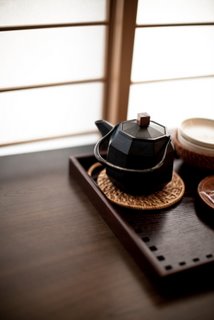
Soothing you senses with a cup of tea
From its strong health properties to its millennia-old cultural history, tea provides a rich and nourishing experience in every cup. While all tea is derived from the vibrant leaves of Camellia sinensis, each variety—much like cheese and wine—has its own regional home, processing technique, and unique taste characteristics. As you discover the vast world of tea, you may develop favorite flavors and even regional loyalties (we list a global selection of organic teas below, each rich in antioxidants, amino acids, vitamins, and minerals). The journey starts by creating a personal ritual of preparation and appreciation—soothing your senses along the way.
Black
Formed by withering, rolling, oxidizing, and drying the fresh leaves, black tea today hails largely from the mountainous areas of India, Sri Lanka, and Kenya. Enjoy the touch of honey flavor in Mighty Leaf Tea’s Organic Darjeeling Estate ($12.95, 3 oz).
Oolong
Chinese and Taiwanese tea makers create the characteristically complex flavor of oolong tea—with a bouquet ranging from apricot to spice—by tossing, bruising, and roasting the leaves. For a woody flavor, try Art of Tea’s Iron Goddess of Mercy Roasted ($17, 4 oz).
Green
Fine green teas are the products of spring’s first flush, when warming weather quickly matures dormant nutrients. Minimal processing prevents oxidation, so the leaf retains its natural hue. Numi’s Monkey King Jasmine ($9.75, 4 oz) offers a crisp tea with floral high notes.
White
Slow drying gives white teas their fluffy look, and light oxidation imparts a mellow taste. Experience the delicate White Blueberry by Zhi ($23, 4 oz), brimming with antioxidants.
Pu-erh
Legend has it that the fermented flavor of pu-erh tea was discovered on the ancient Tea Horse Road connecting China and Tibet. Now gaining popularity in the West, pu-erh can be a collector’s item—sometimes aged for decades. Wild Tree Mini Tuo Cha by Arbor Teas ($22.95, 5 oz) boasts a fresh grassy taste with rich depth.

relax and rejuvenate with a cup of tea
Did You Know? Caffeine occurs naturally in Camellia sinensis (helping the plant ward off insects), but content varies based on factors like regional agricultural conditions, type of leaf, and brewing method. On average, a cup of tea contains one-fourth to one-half the caffeine content of a cup of coffee.
Flavor Unleashed
A soothing cup of tea is the result of a dialogue between water and tea leaves. Asians refer to the process of tea steeping as “the breathing and stretching of the leaves,” according to The Tea Enthusiast’s Handbook by Mary Lou and Robert J. Heiss.
Unglazed teapots and ceramic cups with covers called gaiwans are the ideal vessels to unfurl flavor, says Mary Lou. If you’re at the office or prefer one serving, single-cup mesh filters or paper tea sacks give leaves more space to open and release flavor than do tea balls. With simple equipment, the tea cup can become your witness to a delicious conversation.
adapted from Yoga Internation by Janet Webb Lee — an acupuncturist who also studied yoga and ayurveda extensively. She practices at the Center for Health and Well Being in San Diego, CA.

Timers with chime, perfect for timing tea
Now & Zen
1638 Pearl Street
Boulder, CO 80302
(800) 779-6383
Posted in Meditation Tools, teahouse